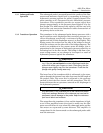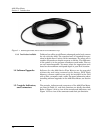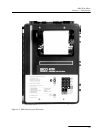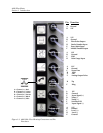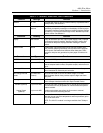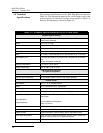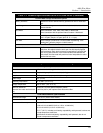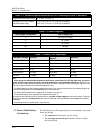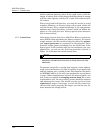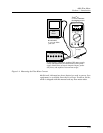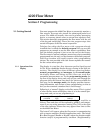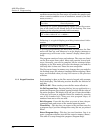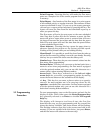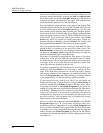
4220 Flow Meter
Section 1 Introduction
1-11
Battery capacity is expressed in ampere-hours. The battery
manufacturer provides this information for each battery. This
value is the product of a load current times an arbitrary time
period, ten hours for nickel-cadmium batteries, and twenty hours
for lead-acid types. The terminal voltage of the battery at the end
of this time period is the discharged cell voltage, 10 volts for
nickel-cadmium and 10.5 volts for lead-acid types. Note that bat-
teries are fully discharged well before the terminal voltage drops
to zero volts.
Isco batteries are rated at 4 ampere-hours for the
nickel-cadmium and 6.5 ampere-hours for lead-acid types.
Convert the battery current capacity into milliamperes and then
divide this figure by the average current drawn by the unit. This
will give you a number in hours. Divide that figure by 24, and
you will have the number of days.
Note that the published ampere-hour figures do not mean that
you can expect to draw 4 amperes from the nickel-cadmium
battery (or 6.5 amperes from the lead-acid battery) for one hour.
At the one-hour rate, discharges are typically less than half the
ten- or twenty-hour rate.
To convert ampere-hours to milliamperes, multiply by 1,000.
Examples:
4 ampere-hours × 1,000 = 4,000 mAh.
6.5 ampere-hours × 1,000 = 6,500 mAh.
If you divide this figure by the average current of the flow meter,
say 15 mA, you will have:
4,000 ÷ 15 = 266.67 hours.
Divide this number by twenty-four to get days:
266.67 hours ÷ 24 = 11.1 days.
As a margin of safety, we suggest you subtract 10% from this
number (100% – 5% for 95% capacity and 5% for a reserve at the
end of discharge).
11.1 – 1.1 = 10 days
This is the battery expectancy for a nickel-cadmium battery with
a 15 mA continuous average drain, with a 10% derating factor.
You can use the same method to calculate for lead-acid batteries,
except the current will be 6,500 mA, and the period correspond-
ingly longer, in this case a little over 16 days. You can run the full
number of days calculated without derating if your batteries are
new and at 100% capacity, but you will leave yourself no safety
factor if you are in error on either of these assumptions.
Remember, if the battery fails, there will be a period of time
during which no measurements will be taken, (and no data
stored, if you are also using Flowlink® software).
Batteries lose capacity as they age. Capacity also drops off as
temperature falls. Low temperatures make less capacity
available due to the slowing of the chemical reactions, while high
temperatures accelerate the deterioration of battery plate sepa-
rators, particularly if they are aged. Note also that



